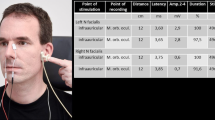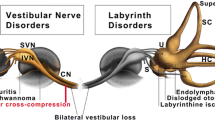Summary
¶ Object. The auditory brainstem response (ABR) is the most widely used means of intra-operative monitoring of the integrity of the auditory nerve and brainstem pathways during surgery in the cerebellopontine angle (CPA). Reliability of this and other electrophysiological techniques has been questioned because of persisting potentials in direct nerve recordings despite complete eighth nerve section.
The study was designed to assess the extent to which an acoustic evoked response persists after the cochlear nerve is lesioned in the CPA of the adult rat.
Methods. The eighth nerve was exposed microsurgically via a lateral suboccipital approach without damage to surrounding structures. The auditory brainstem response to monaurally presented click stimuli was recorded using needle electrodes and a bandpass of 10 to 5000 Hz.
Findings. Complete sharp sectioning of the nerve in the CPA resulted in immediate disappearance of brainstem-generated potentials but persistence of a large primary, vertex-positive wave in all but one case. This response was also abolished in recordings three days later and after emptying the inner ear canal. Provided that the cochlea remained intact, two weeks later a single, vertex-positive potential in the latency range of wave Ia of the ABR reappeared, reaching its peak amplitude six weeks after sectioning of the nerve.
Conclusions. The short-latency electrical potential recorded following damage of the eighth nerve in the cerebellopontine angle can be mistaken for an indication that nerve function is still preserved. The evoked injury potential is probably the major contributor to this potential that resembles wave I of the ABR. Monitoring of functional auditory integrity must neither be limited to early components of the ABR, nor to the electrocochleogram (EcoG) and the peripheral compound nerve action potential (CNAP), respectively.
Similar content being viewed by others
Author information
Authors and Affiliations
Rights and permissions
About this article
Cite this article
Rosahl, S., Tatagiba, M., Gharabaghi, A. et al. Acoustic Evoked Response Following Transection of the Eighth Nerve in the Rat. Acta Neurochir (Wien) 142, 1037–1045 (2000). https://doi.org/10.1007/s007010070060
Issue Date:
DOI: https://doi.org/10.1007/s007010070060




